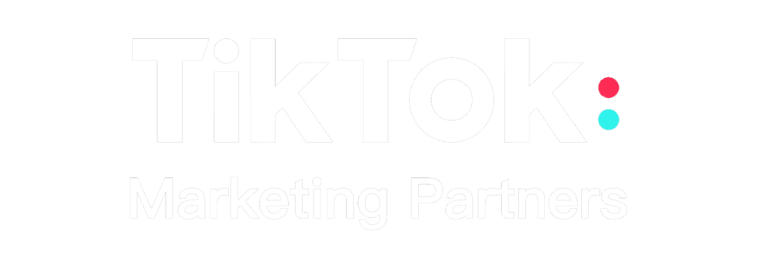How to choose the right website builder for your business

How to choose the right website builder for your business web@digitaladastra.com / October 21, 2025 / News 01. WordPress, Webflow, Shopify or others? It’s bit of a no-brainer, but having an impressive and easy-to-use website is essential for any business in 2024. And the right website builder can make a massive difference. But with so many options, how do you find the one for you? Here’s a comprehensive guide to help you navigate this maze. 02. Understand your needs First things first, figure out what you actually need. Are you building an e-commerce site, a portfolio, a blog, or an informational website? Make a list of must-have features like shopping carts, booking systems, or contact forms. Knowing your needs will narrow down the options and keep you focused on what matters most. For instance, if you’re setting up an online store, you’ll need robust e-commerce features like a shopping cart and secure payment gateways. A portfolio site, on the other hand, will prioritise visual appeal with galleries and multimedia integrations. Understanding your goals is the first step to choosing the right platform. 03. Ease of use A user-friendly interface is crucial, especially if you’re not a tech wizard. Look for builders with intuitive drag-and-drop functionality, straightforward navigation, and pre-designed templates. Platforms like Wix and Weebly are perfect for beginners, offering visual editors that show changes in real-time. The easier it is to use, the quicker you can get your site up and running. According to industry expert Owain Williams, ease of use is critical as it impacts how quickly your team can adapt and support website projects (TechRadar). 04. Design and customisation options Your website is the face of your business, so it needs to look sharp. Ensure the builder offers: Professional Templates: A variety of designs tailored to your industry. Customisation: Flexibility to tweak colours, fonts, and layouts to match your brand. Mobile Responsiveness: Designs that look great on any device. Customisation is key. Platforms like Squarespace and WordPress offer extensive options, allowing you to make significant changes to templates or even create bespoke designs. This flexibility helps your site stand out and truly reflect your brand. 05. Features and integrations Different strokes for different folks, right? Make sure the website builder offers the features your business needs: E-commerce Tools: For online stores, look for shopping carts, payment gateways, and inventory management. SEO Tools: Built-in SEO features can boost your site’s visibility. Blogging Capabilities: If you’re into content marketing, ensure the builder supports blogging. Third-Party Integrations: Compatibility with your favourite tools, like email marketing services and CRM systems. Shopify, for example, is a powerhouse for e-commerce with comprehensive tools for product management and payment processing. Platforms like WordPress and Wix support a wide range of plugins to enhance functionality. 06. Scalability Your website should grow with your business. Choose a builder that offers scalable plans and can handle increased traffic and content. Look for options that allow custom domains and have upgrade paths for more features and capabilities. Scalability is crucial. Platforms like Shopify and Wix offer scalable solutions that can accommodate everything from small businesses to large enterprises, ensuring your site can handle increased demands as you grow. 07. Pricing Money talks. Evaluate the cost and what’s included. Does the builder offer a free domain, email, SSL certificate, or are there hidden costs? Watch out for transaction fees if you’re setting up an e-commerce site, as they can add up quickly. Pricing varies widely. Many builders, like Wix and Squarespace, offer competitive pricing that includes essential features. Be sure to read the fine print to understand all costs, especially if you’re setting up an online store! Popular website builders to consider Wix Wix is a popular choice for small businesses and creatives thanks to its user-friendly drag-and-drop interface. With Wix, you get access to hundreds of professional templates that you can customise to fit your brand. The platform also offers an extensive app market, allowing you to add a variety of functionalities to your site. Whether you need SEO tools, contact forms, or social media integrations, Wix has you covered. Its ADI (Artificial Design Intelligence) can even build a website for you based on your answers to a few questions, making it a perfect choice for beginners. Squarespace Squarespace is known for its sleek, modern templates, making it an excellent option for those who prioritise design. It’s particularly popular among artists, photographers, and small business owners. Squarespace provides robust blogging capabilities, built-in SEO tools, and e-commerce features that allow you to set up an online store with ease. The platform also supports various integrations, such as social media feeds and email marketing services. Additionally, Squarespace offers a comprehensive support system with 24/7 customer service and an extensive knowledge base. Shopify Shopify is our go-to platform for e-commerce businesses. It offers everything you need to set up and run an online store, from product management to secure payment processing and shipping options. Shopify’s app store provides a multitude of add-ons that can enhance your store’s functionality, including tools for SEO, social media marketing, and customer reviews. Shopify also offers various themes and customisation options, allowing you to create a unique shopping experience for your customers. Plus, with its scalable plans, Shopify can grow with your business, accommodating everything from small stores to large enterprises. WordPress.com WordPress.com is highly customisable and scalable, making it a favourite for bloggers and businesses of all sizes. With thousands of themes and plugins available, you can build virtually any type of website. WordPress.com supports robust blogging capabilities, advanced SEO tools, and seamless integrations with third-party services. It also offers different plans that cater to various needs, from personal blogs to professional business websites. If you need even more flexibility, WordPress.org (the self-hosted version that our own development team uses) allows for extensive customisation and control over your site, but it requires more technical know-how. Weebly Weebly is a solid choice for small businesses and beginners due to its simple and reliable drag-and-drop interface. It offers a range of professionally designed templates that are mobile-responsive and easy to customise. It
What Actually Makes a Brand Grow in 2026

What Actually Makes a Brand Grow in 2026 web@digitaladastra.com / October 21, 2025 / News As we step deeper into the AI-driven digital era, brands face a new reality: growth is no longer about trends — it’s about systems. Tools evolve. Platforms change. Algorithms get smarter. But what truly makes a brand grow in 2026 remains timeless — clarity, psychology, and consistency. The brands that will win this year are those that understand human behavior, not just data metrics. They use AI SEO optimization, automation, and personalization to amplify what’s already human — trust. Let’s uncover what actually drives growth today — and how you can build a brand that earns attention instead of buying it. Clarity Over Complexity — Define Your Brand or Be Forgotten In 2026, clarity is the new creativity. Brands that grow are the ones that can answer one question in one sentence: “What problem do you solve, and why should anyone care?” Every digital touchpoint — from your website SEO to your ad copy — must echo the same message. Yet, most businesses still scatter their communication, diluting impact. AI SEO tools now allow you to analyze your messaging across channels. By scanning tone, keywords, and emotional consistency, AI can reveal whether your brand feels aligned — or confusing. 💡 Neuromarketing Insight: The brain remembers clarity, not complexity. If your message isn’t clear within 5 seconds, your brand gets replaced — mentally and digitally. Content Powered by AI — But Guided by Humans AI can now write, design, and even predict what users want to see. But remember: automation without human psychology = noise. The winning combo in 2026 is: AI for creation, humans for calibration. AI content optimization tools like Jasper, Surfer, or Frase analyze: Keyword opportunities and SERP gaps Readability and intent alignment Tone-of-voice consistency across pages Meanwhile, you — the strategist — inject emotion, brand context, and human story. 🧠 Balance: AI finds what people search for. You deliver why they should care. AI in Mobile & Local SEO In 2026, mobile SEO optimization and local intent drive conversions more than ever. AI algorithms evaluate: Mobile speed scores User navigation flow Geo-specific behavior For local businesses, integrating AI chatbots enhances engagement and retention: Visitors can ask, “Are you open today?” or “What services do you offer nearby?” — and get instant answers. This improves both UX and ranking metrics. 📍 Local SEO Tip: Use AI tools to automatically generate localized meta tags, headings, and voice-friendly content variations. The Future of Brand Growth = Trust + Tech Here’s the paradox of 2026: The more the world automates, the more people crave authenticity. AI SEO, automation, and data will give you speed — but only trust will give you longevity. The most successful brands of this decade will be those that use AI to understand people, not replace them. Every algorithm update, every trend, every platform shift will still reward one thing: value. Because in the end, the most advanced strategy is still being real. Key Takeaways AI SEO and human psychology are the foundation of growth in 2026. Clarity outperforms creativity. Be consistent, not trendy. Voice search SEO and personalization define modern optimization. AI content optimization saves time but emotion sells. Trust is the ultimate algorithm. 01. What is AI SEO? AI SEO is the use of artificial intelligence and machine learning to analyze, optimize, and automate SEO processes — from keyword research to content personalization. 02. How can AI improve SEO performance? AI enhances content optimization, link building, and ranking analysis, identifying what truly drives engagement and conversion. 03. Will AI replace human SEO experts? No — AI accelerates data analysis, but humans still interpret emotion, strategy, and storytelling. The future is AI-assisted, human-driven SEO. Conclusion & CTA In 2026, brand growth isn’t a mystery — it’s a system built on trust, clarity, and intelligent automation. If your brand is ready to evolve with AI-powered marketing, Ad Astra helps you integrate AI SEO, neuromarketing, and growth systems that actually convert. Post Tags : This post , No term , Example only Dare us to get you results? Your best performance today should only be the starting point. Let’s see what happens when we push the limits. Book A call
Louis Vuitton’s Formula 1 Play

Louis Vuitton’s Formula 1 Play web@digitaladastra.com / September 6, 2025 / News In a bold move that’s turning heads across both the fashion and motorsport industries, Louis Vuitton has announced a landmark 10-year global partnership with Formula 1, commencing in 2025. This collaboration not only designates Louis Vuitton as an official partner of Formula 1 but also bestows upon the brand the prestigious title sponsorship of the season-opening Australian Grand Prix in Melbourne, scheduled from March 14 to 16, 2025. But beyond the headlines, this partnership is a strategic masterstroke in luxury marketing. Here’s why. Aligning with a Global, Affluent Audience Formula 1 boasts a global audience exceeding 1.5 billion viewers annually, with a significant portion comprising high-income individuals. By associating with F1, Louis Vuitton taps into a ready-made ecosystem of luxury consumers, providing a direct marketing channel for its products. Reinforcing Brand Values of Excellence and Innovation Both Louis Vuitton and Formula 1 epitomize precision, performance, and innovation. This partnership underscores Louis Vuitton’s commitment to these values, aligning its brand with the pinnacle of automotive engineering and competition. Key Reasons Why This Partnership Makes Marketing Sense Global Reach, Luxury Audience Formula 1 reaches over 1.5 billion viewers annually — many of whom are in the top spending brackets. It’s one of the few platforms that gives LV direct exposure to high-net-worth individuals on a global scale. Positioning at the Intersection of Culture and Speed The crossover between fashion, sport, and entertainment has never been more powerful. With shows like Drive to Survive, F1 has become a pop culture phenomenon. Louis Vuitton is leveraging this to stay relevant among the next generation of luxury consumers. Tapping Into Experiential Marketing From custom-designed trophy trunks on the podium to involvement in opening ceremonies and immersive race weekend moments — this partnership is built for content, storytelling, and unforgettable visual branding. Prestige by Association F1 represents the pinnacle of precision and engineering — values that align perfectly with Louis Vuitton’s craftsmanship. This isn’t about chasing trends; it’s about reinforcing identity through alignment with elite excellence. 2025 Trends This Move Aligns With Luxury Going Experiential Traditional luxury is evolving — it’s no longer just about the product, but the moment and emotion it creates. Louis Vuitton in F1 isn’t selling bags; it’s selling legacy, lifestyle, and movement. From Static to Dynamic Brand Activations Static ads are out — live, on-the-move brand activations are in. Louis Vuitton’s presence trackside will offer dynamic storytelling opportunities across digital, media, and physical spaces. Redefining Modern Luxury This move marks a clear shift: from runway to racetrack. Louis Vuitton is setting the tone for what modern, culturally relevant luxury looks like in the 2025+ era. Why Now? The luxury consumer is evolving. Younger audiences demand more than just logos — they want meaning, momentum, and modernity. With the F1 audience getting younger and more diverse thanks to global media coverage and digital content, Louis Vuitton is planting itself exactly where the future of luxury lives. Final Thoughts: Win-Win PartnershipThis isn’t just marketing. It’s future-proofing. Louis Vuitton’s partnership with Formula 1 is a calculated move to: •Extend global brand equity•Stay top-of-mind among emerging luxury audiences•Blend heritage with modernity in a way no competitor currently is It’s storytelling, status, and strategy — all at 300 km/h. Post Tags : Branding , Formula 1 , UI/UX




